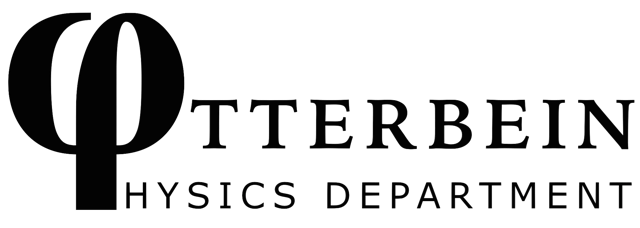
David G. RobertsonDepartment of PhysicsOtterbein University Westerville, OH 43081 Phone: 614-823-1516 Email: DRobertson@Otterbein.edu Office: The Point 108 |

|

David G. RobertsonDepartment of PhysicsOtterbein University Westerville, OH 43081 Phone: 614-823-1516 Email: DRobertson@Otterbein.edu Office: The Point 108 |

|
My speciality is theoretical high energy physics. This is the area of physics that deals with the most fundamental constituents of matter. My interests center mainly on the properties of relativistic quantum field theory, the theoretical framework used to describe elementary particles and their interactions.
I also have an interest in high-performance scientific computing, including parallel computing and visualization.
SMDR, written with Steve Martin, is a library of computer utilities, written in C, for calculations in the tadpole-free pure MSbar scheme in the Standard Model of particle physics. Included at present are the minimization condition for the VEV at 3-loop order with 4-loop QCD effects, the Higgs pole mass at 2-loop order with 3-loop QCD and top-quark Yukawa effects, the top-quark pole mass at 4-loop order in QCD with full 2-loop electroweak effects, the W- and Z-boson pole and Breit-Wigner masses and the Fermi decay constant at full 2-loop orders, the fine structure constant and weak mixing angle, and all known contributions to renormalization group equations and threshold matching relations for the gauge couplings, fermion masses and Yukawa couplings. SMDR subsumes and replaces our earlier program SMH.
3VIL, also written with Steve Martin, is a library of utilities for the evaluation of 3-loop vacuum Feynman integrals.
TSIL, also written with Steve Martin, is a library for the numerical evaluation of dimensionally-regularized two loop self-energy integrals with arbitrary masses and external momentum.
I have also contributed to SOFTSUSY.
Computational Physics Modules Computational projects spanning a range of physics topics, developed as part of NSF grant NSF-CCLI DUE 0618252. Modules include student and instructor notes and sample codes.
Project NANO, sponsored by the National Science Foundation brought aspects of nanoscience and nanotechnology into the science curriculum at Otterbein. Project activities include a workshop for high school science teachers, development of new laboratory activites using scanning tunneling microscopes, and joint Chemistry/Physics advanced laboratory exercises.
A (nearly) complete list is available from the Inspire database.